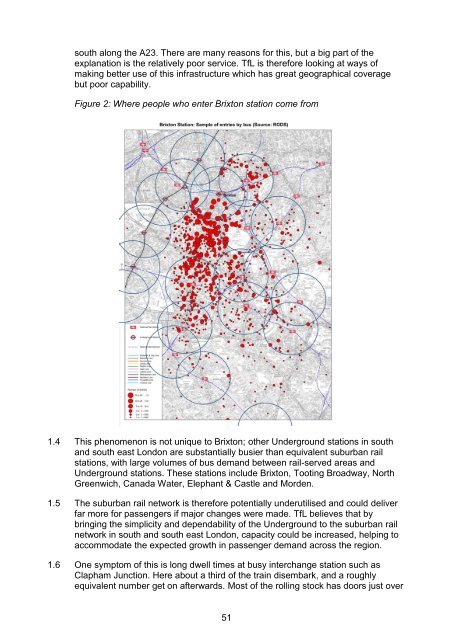Title Rail devolution business case narrative 1 Summary
rail-devolution-business-case-narrative
rail-devolution-business-case-narrative
You also want an ePaper? Increase the reach of your titles
YUMPU automatically turns print PDFs into web optimized ePapers that Google loves.
south along the A23. There are many reasons for this, but a big part of the<br />
explanation is the relatively poor service. TfL is therefore looking at ways of<br />
making better use of this infrastructure which has great geographical coverage<br />
but poor capability.<br />
Figure 2: Where people who enter Brixton station come from<br />
1.4 This phenomenon is not unique to Brixton; other Underground stations in south<br />
and south east London are substantially busier than equivalent suburban rail<br />
stations, with large volumes of bus demand between rail-served areas and<br />
Underground stations. These stations include Brixton, Tooting Broadway, North<br />
Greenwich, Canada Water, Elephant & Castle and Morden.<br />
1.5 The suburban rail network is therefore potentially underutilised and could deliver<br />
far more for passengers if major changes were made. TfL believes that by<br />
bringing the simplicity and dependability of the Underground to the suburban rail<br />
network in south and south east London, capacity could be increased, helping to<br />
accommodate the expected growth in passenger demand across the region.<br />
1.6 One symptom of this is long dwell times at busy interchange station such as<br />
Clapham Junction. Here about a third of the train disembark, and a roughly<br />
equivalent number get on afterwards. Most of the rolling stock has doors just over<br />
51


